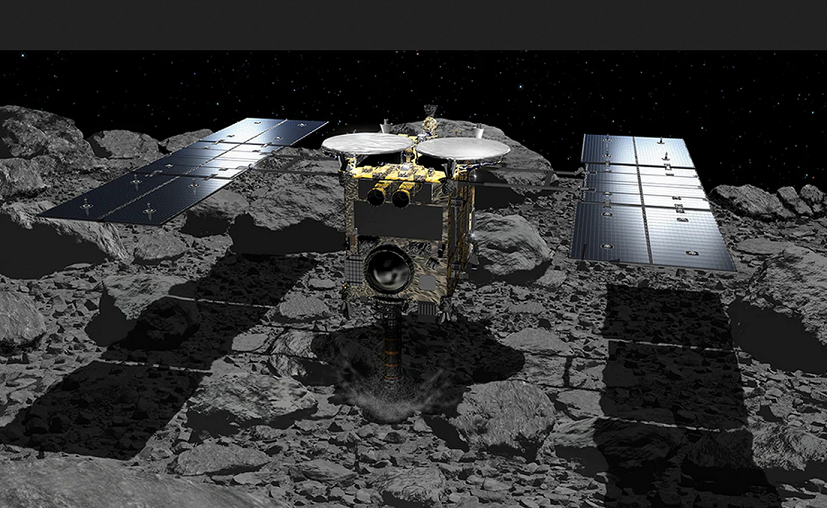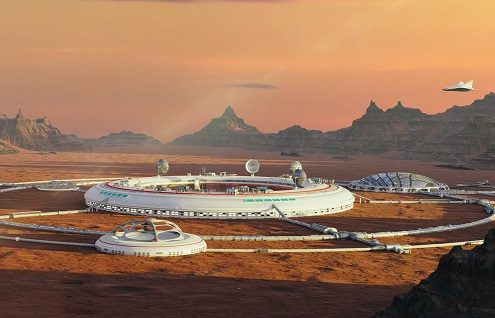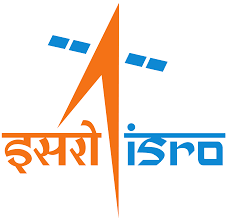Collaboration with other leading space players is the way forward for India.

Mars mission carrying 100 metric tons cargo in 2022 followed by a manned mission by 2024 are the immediate milestones of Elon Musk’s SpaceX plan which aims to create a self sustaining Mars city by 2050. Just a few decades back this would have sounded as fantasy, but today it looks as if this time frame may actually be bettered. Space missions are set to undergo revolutionary changes and Elon Musk’s vision and timelines are indicators of this. Space is increasingly being seen as a treasure trove of precious minerals and also a place for future human habitation beyond the earth. Global private space industry investors believe that space mining has the potential to shape and define the 21st Century. NASA estimates that the ‘Asteroid belt’ holds minerals worth quintillion of dollars. American astrophysicist Neil Degrasse Tyson believes, “The first trillioners will be those who mine asteroids”.
 The “Main Asteroid Belt” is located between the orbits of Mars and Jupiter, about 450 to 650 million Kilometers from earth, with million asteroids in it. Over the decades, apart from Moon and Mars, governments and private agencies have been carrying out extensive research and studying asteroids for their composition, possibility of mining them and their mining value —Asteriod ‘Bennu’ has been assessed at $670 million and asteroid ‘2011 UW158’ at $ 5.7 trillion. Transportation of the mined resources for utilisation, however, poses major hurdles. A ‘BBC Future’ report by Sarah Cruddas puts the cost of shipping a ton of water into space at about $ 50 million. As per Chris Lewicki, president of Planetary Resources, an asteroid mining company, it takes more energy to escape the first 300 kilometers from the Earth than the next 300 million kilometers. Similarly, bringing back anything more than a few kilograms of samples from space to the Earth would be even more complex in terms of logistics. To start with, therefore, global space industry investors are focusing on keeping mined space resources in space itself for ‘in situ resource utilisation’. Availability of water on the Moon, Mars and asteroids offer very attractive prospects; apart from being crucial for supporting life and growing food, it also opens the possibility of using its constituents, hydrogen and oxygen, for making rocket fuel. Today, the possibility of manufacturing tools and even building habitats on Moon or Mars with the help of 3D printers using iron, nickel, cobalt, gold, platinum, and iridium etc which are available on the Moon, Mars and asteroids seem within reach. Researchers are working on using regolith, the weathered rock particles found on lunar surface for making moon bricks using 3D printers. These bricks will form the basic construction material for the first moon station and even the first moon hotel. Space industry players believe that an investment of $ 4 billion in water mining in space can generate annual revenue worth about $2.4 billion. Similarly, there is a new community of customers who are already looking for buying propellant in space. American space launch provider, United Launch Alliance (ULA), a Lockheed Martin and Boeing joint venture that provides launch rockets, has made it known that, ULA is willing to pay about $ 3000 a Kg for propellant in low earth orbit.
The “Main Asteroid Belt” is located between the orbits of Mars and Jupiter, about 450 to 650 million Kilometers from earth, with million asteroids in it. Over the decades, apart from Moon and Mars, governments and private agencies have been carrying out extensive research and studying asteroids for their composition, possibility of mining them and their mining value —Asteriod ‘Bennu’ has been assessed at $670 million and asteroid ‘2011 UW158’ at $ 5.7 trillion. Transportation of the mined resources for utilisation, however, poses major hurdles. A ‘BBC Future’ report by Sarah Cruddas puts the cost of shipping a ton of water into space at about $ 50 million. As per Chris Lewicki, president of Planetary Resources, an asteroid mining company, it takes more energy to escape the first 300 kilometers from the Earth than the next 300 million kilometers. Similarly, bringing back anything more than a few kilograms of samples from space to the Earth would be even more complex in terms of logistics. To start with, therefore, global space industry investors are focusing on keeping mined space resources in space itself for ‘in situ resource utilisation’. Availability of water on the Moon, Mars and asteroids offer very attractive prospects; apart from being crucial for supporting life and growing food, it also opens the possibility of using its constituents, hydrogen and oxygen, for making rocket fuel. Today, the possibility of manufacturing tools and even building habitats on Moon or Mars with the help of 3D printers using iron, nickel, cobalt, gold, platinum, and iridium etc which are available on the Moon, Mars and asteroids seem within reach. Researchers are working on using regolith, the weathered rock particles found on lunar surface for making moon bricks using 3D printers. These bricks will form the basic construction material for the first moon station and even the first moon hotel. Space industry players believe that an investment of $ 4 billion in water mining in space can generate annual revenue worth about $2.4 billion. Similarly, there is a new community of customers who are already looking for buying propellant in space. American space launch provider, United Launch Alliance (ULA), a Lockheed Martin and Boeing joint venture that provides launch rockets, has made it known that, ULA is willing to pay about $ 3000 a Kg for propellant in low earth orbit.
Fast paced developments are taking place in the field of space mining technology with private players in the lead. Optical mining using concentrated sunlight, robotics, automated mining applications, advanced drilling machines etc are just a few examples. Participation of private players has reduced the investment burden and greatly enhanced the width and pace of innovation. It is believed that launch of the first asteroid mining vehicle as well as setting up of the first fuelling stations on the Moon and in low earth orbit could become a reality within a decade.

Japanese mission ‘Hayabusa’ was the first to bring samples from an asteroid to earth in 2010. ‘Hayabusa – 2’ made its rendezvous with the near earth asteroid ‘162173 RYUGU’ in June 2018, left the asteroid after collecting samples in November 2019 and will be back on earth on December 6, 2020. Similarly the NASA mission OSIRIS-REx, costing about $ 1 billion, launched in 2016 is due to return to earth with samples of asteroid ‘101955 Bennu’ on September 24, 2023. The latest US space mission, ‘Perseverance’ launched on July 30, 2020 will land on Mars on February 18, 2021. It will be using a helicopter on Mars, set to be the first use of a helicopter outside the earth. Apart from collecting samples from Mars and search for signs of habitable conditions on Mars, it will also test the possibility of manufacturing molecular oxygen from the carbon dioxide-rich Mars atmosphere.
 Beyond the technological capability, there are, however, complex legal issues. While making fuel and water in space and its ‘in situ resource utilization’ may pass the scrutiny, commercial exploitation of space through minerals mining, tourism, real estate etc may prove hugely contentious in terms of international legal framework for space. The current legal frameworks were adopted when space activities were entirely within the domain of national governments and were confined to research alone. But with the nature of space activities moving from purely research activities to military applications to commercial activities and with the entry of private players and a new community of consumers in space, the vintage outer space treaty has been rendered grossly inadequate; vagueness of the treaty does not cater for the ‘new types of uses’ or the ‘new users’ of space. Louis de Gouyon Matignon, in a thesis on the subject observed that “some states have already taken the absence of express prohibition as a sign that the utilization of space resources is permissible, and both the USA and Luxembourg recently adopted national legislations expressly allowing it”. This has, however, triggered a response from the international community denouncing such unilateral initiatives and recommending a collective approach on the lines of the laws for high seas and deep sea bed. Whether a widely acceptable new space treaty comes through or not, Space mining is a reality and the early entrants are likely to retain monopoly and huge economic advantages for a very long time.
Beyond the technological capability, there are, however, complex legal issues. While making fuel and water in space and its ‘in situ resource utilization’ may pass the scrutiny, commercial exploitation of space through minerals mining, tourism, real estate etc may prove hugely contentious in terms of international legal framework for space. The current legal frameworks were adopted when space activities were entirely within the domain of national governments and were confined to research alone. But with the nature of space activities moving from purely research activities to military applications to commercial activities and with the entry of private players and a new community of consumers in space, the vintage outer space treaty has been rendered grossly inadequate; vagueness of the treaty does not cater for the ‘new types of uses’ or the ‘new users’ of space. Louis de Gouyon Matignon, in a thesis on the subject observed that “some states have already taken the absence of express prohibition as a sign that the utilization of space resources is permissible, and both the USA and Luxembourg recently adopted national legislations expressly allowing it”. This has, however, triggered a response from the international community denouncing such unilateral initiatives and recommending a collective approach on the lines of the laws for high seas and deep sea bed. Whether a widely acceptable new space treaty comes through or not, Space mining is a reality and the early entrants are likely to retain monopoly and huge economic advantages for a very long time.
 Where does India stand? From a modest beginning of launching small rockets carrying 30 to 70 Kgs to the present payload capability of 4000Kgs, ISRO has come a long way and is amongst the global leaders in making and launching of rockets and satellites as well as in remote sensing and communication applications. Indian Mars Orbiter launched in November 2013 entered the Mars orbit on September 24, 2014 making ISRO only the fourth agency to reach the Mars orbit. In 2017 ISRO set a world record by launching 104 satellites in a single rocket. India also successfully tested anti satellite capability in March 2019. The ambitious ‘Chandrayan-2’
Where does India stand? From a modest beginning of launching small rockets carrying 30 to 70 Kgs to the present payload capability of 4000Kgs, ISRO has come a long way and is amongst the global leaders in making and launching of rockets and satellites as well as in remote sensing and communication applications. Indian Mars Orbiter launched in November 2013 entered the Mars orbit on September 24, 2014 making ISRO only the fourth agency to reach the Mars orbit. In 2017 ISRO set a world record by launching 104 satellites in a single rocket. India also successfully tested anti satellite capability in March 2019. The ambitious ‘Chandrayan-2’ in July 2019 came agonizingly close to being a spectacular success. Despite India’s well recognized space capabilities, there has been no known endeavour by it beyond exploration for research, remote sensing and communication, into areas such as space tourism, space mining, building human habitat etc. However, there have been very encouraging developments recently, towards realizing the commercial potential of ISRO’s capabilities and permitting private players into Indian space industry. Establishment of ‘NewSpace India Limited’ (NSIL) as the commercial arm of ISRO in March 2019, ISRO’s recent vision statement to make India a ‘global Space hub’ in five years and the government’s announcement in June 2020 about setting up of ‘IN-SPACe’ (Indian Space Promotion and Authorisation Centre), an autonomous agency under the Dept of Space as a separate vertical and paving the way for Indian private sector to commercially build rockets and satellites and provide launch services auger well for Indian space industry. Cutting edge technology, huge capital investment, high risk and long lead time are inherent to space ventures. Against the ISRO’s annual budget of $ 1.2 billion, NASA’s budget is $ 21 billion, while their Chinese and Russian counterparts have budgets of $ 8.4 billion and $ 3 billion. Despite its huge budget, NASA collaborates with other international agencies to reduce the budget burden and to derive collaborative technological advantages. The International Space Station (ISS) jointly operated by US, Russia, Japan, Europe and Canada is a glaring example. Private players like SpaceX, Blue Origin and Virgin Galatic have also become major space industry players.
in July 2019 came agonizingly close to being a spectacular success. Despite India’s well recognized space capabilities, there has been no known endeavour by it beyond exploration for research, remote sensing and communication, into areas such as space tourism, space mining, building human habitat etc. However, there have been very encouraging developments recently, towards realizing the commercial potential of ISRO’s capabilities and permitting private players into Indian space industry. Establishment of ‘NewSpace India Limited’ (NSIL) as the commercial arm of ISRO in March 2019, ISRO’s recent vision statement to make India a ‘global Space hub’ in five years and the government’s announcement in June 2020 about setting up of ‘IN-SPACe’ (Indian Space Promotion and Authorisation Centre), an autonomous agency under the Dept of Space as a separate vertical and paving the way for Indian private sector to commercially build rockets and satellites and provide launch services auger well for Indian space industry. Cutting edge technology, huge capital investment, high risk and long lead time are inherent to space ventures. Against the ISRO’s annual budget of $ 1.2 billion, NASA’s budget is $ 21 billion, while their Chinese and Russian counterparts have budgets of $ 8.4 billion and $ 3 billion. Despite its huge budget, NASA collaborates with other international agencies to reduce the budget burden and to derive collaborative technological advantages. The International Space Station (ISS) jointly operated by US, Russia, Japan, Europe and Canada is a glaring example. Private players like SpaceX, Blue Origin and Virgin Galatic have also become major space industry players.
 The global space economy today is worth about $ 360 billion and is estimated to grow to trillions by 2040. US, Russia, China, Japan, Australia, Euro Space Agency (ESA) and even a small country like Luxemburg which has 10 registered space mining companies, are already in the race. In contrast to this, India accounts for a meager 3% of the global space industry today. The amazing pace of new developments in space technology and its huge budgetary requirements are making even developed countries to collaborate with others. These factors combined with the obvious legal tussle and intense struggle for a slice of the ‘space pie’ that lies ahead, is certain to leave space explorers’ like ISRO who operate alone, far behind. Therefore, collaboration with other leading space players, without further delay, is clearly the only way forward for India. India’s existing space prowess and its ability to contribute its due and fair share of financial support will make it a welcome partner in any space alliance.
The global space economy today is worth about $ 360 billion and is estimated to grow to trillions by 2040. US, Russia, China, Japan, Australia, Euro Space Agency (ESA) and even a small country like Luxemburg which has 10 registered space mining companies, are already in the race. In contrast to this, India accounts for a meager 3% of the global space industry today. The amazing pace of new developments in space technology and its huge budgetary requirements are making even developed countries to collaborate with others. These factors combined with the obvious legal tussle and intense struggle for a slice of the ‘space pie’ that lies ahead, is certain to leave space explorers’ like ISRO who operate alone, far behind. Therefore, collaboration with other leading space players, without further delay, is clearly the only way forward for India. India’s existing space prowess and its ability to contribute its due and fair share of financial support will make it a welcome partner in any space alliance.
Lt Gen. Krishnan is a former deputy chief of Army. Views expressed in this article are those of the author and do not reflect the opinions or views of IIRF
First published in “The Week” on 6 August 2020 https://www.theweek.in/news/sci-tech/2020/08/06/Space-mining-Just-around-the-corner.html. This is a reprint with the permission of the author.








